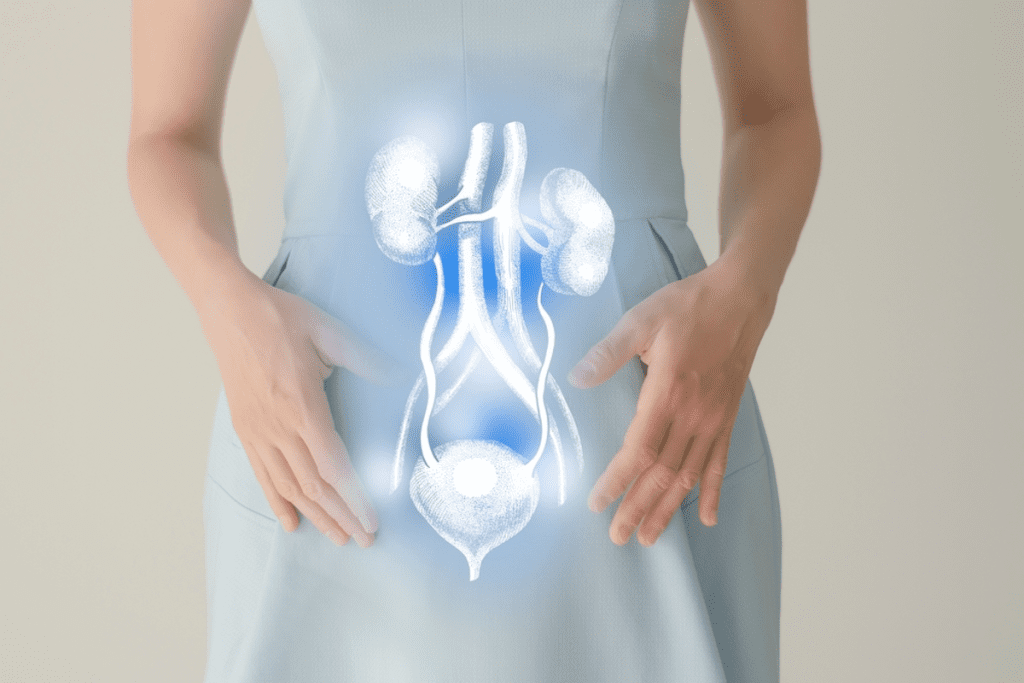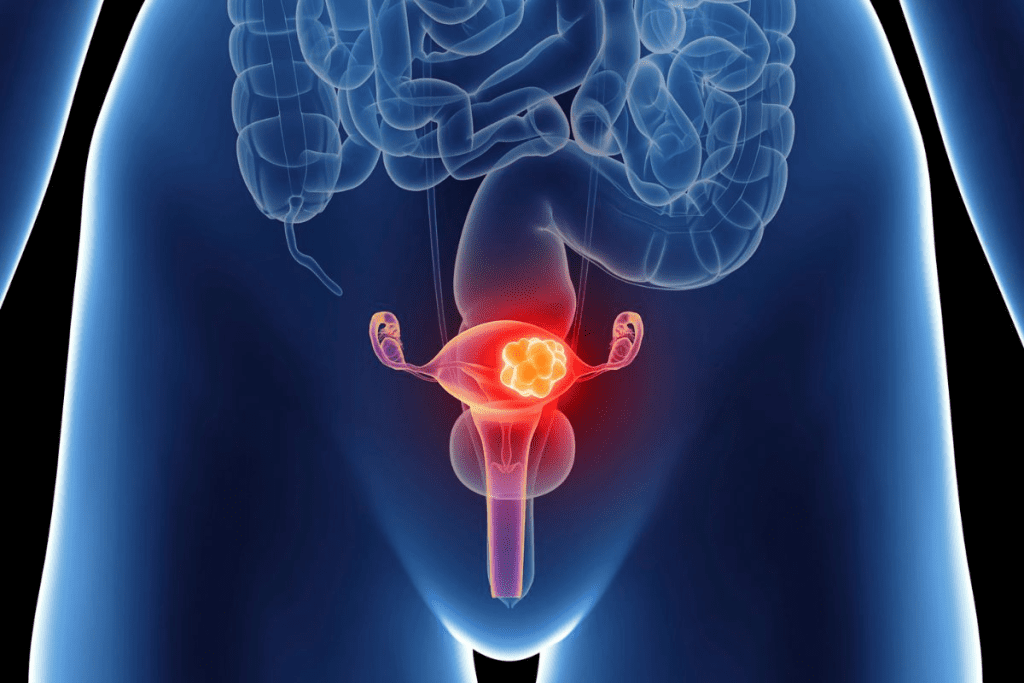Last Updated on October 31, 2025 by

Keeping your bladder healthy is key to overall comfort and wellbeing. The bladder stores urine until it’s time to go, but sometimes, bladder issues can affect this natural process. Damage to the bladder lining can lead to problems like leaking, pain, or frequent urges to urinate.
If you’ve ever struggled to urinate or felt discomfort, you may have wondered how to make yourself pee safely. The good news is that there are natural ways to support your bladder function and help restore its lining. Recent studies show that the bladder can heal itself using natural cell regeneration and certain nutrients that promote tissue repair.
Simple lifestyle changes”like staying hydrated, avoiding caffeine, and eating foods rich in antioxidants”can help the bladder recover. Gentle relaxation techniques can also make it easier to urinate when needed. These natural methods not only help you pee more comfortably but also strengthen your bladder health over time.
The urothelium, or bladder lining, is a complex layer of cells. It protects the bladder wall and helps with normal urine flow. This layer is key to keeping the bladder healthy and working right.
The urothelium has several layers of cells inside the bladder. Its main job is to block urine and harmful substances from reaching the bladder wall. It also stops urine from leaking into other tissues. When it works well, it lets urine be stored and released normally.

Many things can harm the bladder lining, like urinary tract infections and bladder injuries. Chronic conditions such as interstitial cystitis can also cause damage. This leads to symptoms like pelvic pain and needing to pee a lot. Knowing what causes damage is important for prevention and treatment.
Feeling the need to pee a lot, pelvic pain, or discomfort while urinating might mean your bladder lining is damaged. Other signs include urinary urgency, incontinence, or blood in the urine. Spotting these signs early can help get the right medical care and prevent more harm.
Keeping the bladder lining healthy is vital for good urinary health. By knowing how it works and what can harm it, people can take steps to protect their bladder. This way, they can address any problems quickly.
Understanding how the bladder regenerates naturally is key to finding new treatments for urinary issues. The bladder’s ability to heal is complex. It involves many cellular and molecular processes.
Bladder progenitor cells are vital for healing the bladder lining. They can turn into different cell types, helping fix damaged tissue. Studies show that bladder progenitor cells keep the bladder’s lining strong.
The healing process is complex. It involves cell activation, growth, and change. Knowing these steps can help us find new ways to help the bladder heal.
Retinoic acid, a vitamin A derivative, is important for bladder cell growth. It helps cells grow and change, which is key for fixing the bladder lining.
Eating foods rich in vitamin A can help bladder health. Sweet potatoes, carrots, and dark leafy greens are good sources. They support the bladder’s natural healing.

New studies are making big strides in bladder regeneration. Researchers are looking into biomaterials and tissue engineering to improve bladder repair.
Some exciting research areas include:
These advances could lead to new treatments for urinary issues. They could greatly improve life for those with bladder problems.
A balanced diet is key to keeping your bladder healthy. It helps the bladder lining heal naturally. We’ll look at how certain foods can aid in healing and improve urinary health.
Vitamin A is vital for bladder lining health. Foods like sweet potatoes, carrots, and dark greens are rich in it. Adding these to your meals can nourish your bladder.
Top Vitamin A-Rich Foods:
Eating foods that fight inflammation can help your bladder heal. Omega-3-rich foods like salmon and flaxseeds are great. Berries, green tea, and olive oil also have anti-inflammatory effects.
Adding berries to your breakfast or using olive oil in cooking can be easy ways to include these foods.
Key Anti-inflammatory Foods:
Drinking enough water is vital for bladder health. It helps remove bacteria and toxins. Aim for 8-10 glasses of water a day, adjusting for your activity level and climate.
Tips for Proper Hydration:
Biomaterials and natural tissue engineering are changing how we fix the bladder lining. New discoveries in these areas offer fresh ways to help those with urinary problems.
The acellular extracellular matrix (ECM) is a key player in bladder repair. It acts as a natural base for new bladder cells to grow. This helps the bladder heal faster. Research shows ECM can greatly boost bladder function in those with damaged lining.
Key benefits of ECM applications include:
Collagen-based scaffolds are another big step forward in bladder repair. They copy the natural matrix, helping cells grow and repair. Studies prove they can help grow new bladder tissue, improving how well you can urinate.
The advantages of collagen-based scaffolds include:
Bioactive hydrogels are being looked at for bladder repair. They can release healing agents and reduce swelling. Their design to mimic bladder tissue makes them a strong candidate for repair.
The healing properties of bioactive hydrogels include:
As research keeps moving forward, we’ll see better ways to fix the bladder. These new methods could greatly improve life for those with urinary problems.
Making smart choices about daily habits can help with bladder issues. Simple changes can greatly improve bladder health and overall well-being.
Stress can make urinary issues worse. Managing stress is key to bladder health. Meditation, deep breathing, and yoga can help.
These activities calm the mind and body. They can reduce stress and help with urinary issues.
Regular relaxation helps manage stress. It supports bladder health. Find what works for you, like mindfulness or exercise.
Exercise is vital for pelvic floor strength. This strength is key to bladder control. Kegels, Pilates, and yoga can help.
Adding these exercises to your day can make a big difference. Kegels are easy and discreet, making them great for bladder health.
Being careful about what you use and eat is important. Some chemicals can irritate the bladder. Avoiding these can help.
Also, watch what you eat and drink. Avoid caffeine, alcohol, and spicy foods. Drinking water helps flush out toxins.
Choosing wisely about diet, exercise, stress, and avoiding harmful substances can help heal your bladder. These simple changes can greatly improve your bladder health and life quality.
Fixing bladder lining health needs a mix of steps. We’ve looked at natural ways to help, like changing what we eat and how we live. Adding foods rich in vitamin A and staying hydrated is key. Stress management and pelvic floor exercises can also help.
If you have bladder problems, see a doctor for a plan that fits you. They can guide you on how to manage your bladder. This way, you can improve your bladder health and avoid problems from holding urine too long or going too often.
To help you urinate, try relaxing in a warm bath or using the double voiding method. Gently pressing on your lower abdomen can also help. But if you can’t urinate easily, see a doctor to check for health issues.
Holding urine for too long can cause problems like infections and harm yto our bladder. It’s best to pee when you need to to avoid these issues.
To pee less often, drink less water before bed, and avoid caffeine and spicy foods. Also, doing pelvic floor exercises can help control your bladder.
How long you can hold urine varies. It depends on how much you drink, your health, and your bladder size. Try not to hold it for more than a few hours to stay safe.
Women often face issues like incontinence, overactive bladder, and UTIs. If you have these problems, talk to a doctor for advice on how to manage them.
To pee faster, relax and take your time. Rushing can make you not empty your bladder fully. If you have trouble, talk to a doctor.
Clear urine means you’re hydrated, but not drinking enough water might be a sign of a problem. See a doctor to check your health.
There’s not much proof for natural ways to make your pee flow bigger. But, eating well and staying hydrated can help your urinary health. Talk to a doctor if you’re worried.
If you can’t pee, try relaxing, running warm water on your genital area, or the double voiding method. If it doesn’t work, see a doctor.
Subscribe to our e-newsletter to stay informed about the latest innovations in the world of health and exclusive offers!